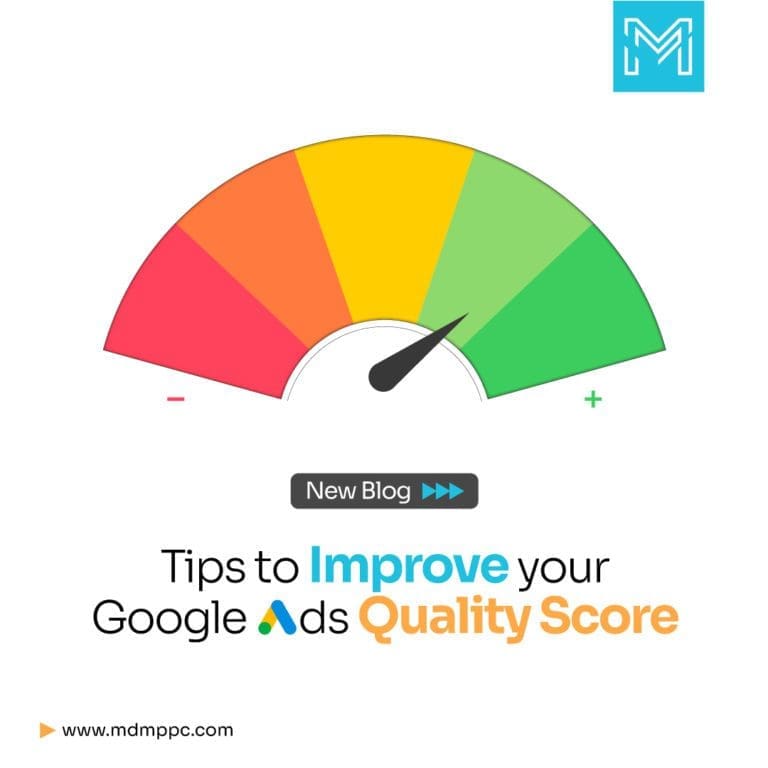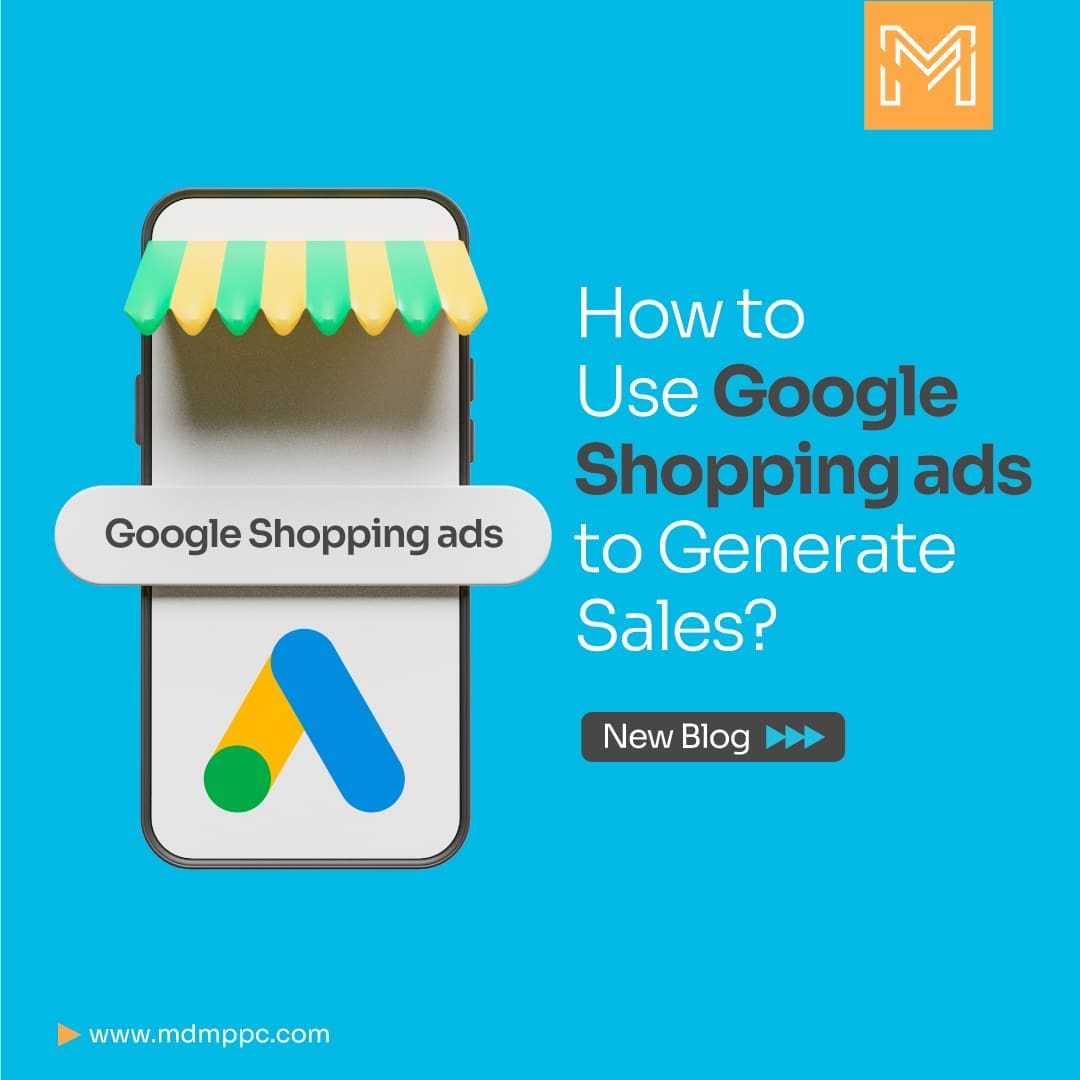Did you know that your ad campaigns are rated by Google?
This rating or Quality Score is a core pay-per-click optimization, and it affects the CPC of your ads as well. Relevant ads and a good landing page mean higher QS. Quality Score also tells you the success of your ads as against your competitors.
In this article, we’ll dive into Quality scores and ways to improve them.
What is Google Ads Quality Score?
Google’s ad Quality Score is a metric that measures the quality and relevance of your ads, keywords, and landing pages. It’s a rating system used by Google to determine how relevant your ad is to the user’s search query.
Quality Score is calculated based on various factors, including ad relevance, expected click-through rate (CTR), landing page experience, and more.
A higher Quality Score indicates that your ads are relevant to the user’s search query and will likely result in a positive user experience. This, in turn, can lead to a higher ad rank and a lower cost-per-click (CPC). A lower Quality Score can result in lower ad rank, higher CPCs, and reduced ad visibility.
Long story short, having a high-Quality Score is crucial for a successful Google Ads campaign, as it can help you achieve better ad placement and a more cost-effective advertising strategy.
Why is Quality Score Important?
Quality Score is an essential metric in Google Ads because it directly affects the performance and cost of your ads. Here are a few reasons why Quality Score is important:
- Better Ad Positioning: A higher Google Ad Quality Score can lead to better ad positioning, which means your ads will appear higher in the search results. This results in more clicks and conversions for your business.
- Lower Cost-Per-Click (CPC): Having a lower cost-per-click (CPC) means you’ll pay less for each click on your ad. This can help you save money and get more value from your ad spend.
- Increased Ad Visibility: A higher Quality Score can improve your ad’s visibility, which means your ads will be seen by more potential customers. Good QS leads to increased brand awareness and customer acquisition.
- Better ROI: If you want a better return on investment (ROI) for your advertising efforts, you must start by improving the relevance and quality of your ads, you can attract more qualified leads, which can result in more sales and revenue for your business.
This is why digital marketers focus on high-Quality Scores to achieve better ad performance, lower costs, and better ROI for their Google Ads campaign.
How Google Ads Quality score is measured and the factors that affect it?
Quality Score is measured on a scale of 1 to 10 and is based on a combination of several factors, including:
- Ad Relevance-How closely the user’s search phrase matches your ad.
- Expected Click-Through Rate (CTR): The likelihood that your ad will be clicked on based on its relevance to the user’s search query.
- Landing Page Experience– The relevance and quality of your landing page to the user’s search query.
- Ad Formats-The relevance and performance of the ad formats you use, such as text ads, image ads, and video ads.
- Historical Ad Performance- The historical performance of your ads and your account in general, including click-through rate, ad relevance, and landing page experience.
- Account Performance– The overall performance of your account, including the performance of all campaigns and ad groups.
Each of these factors is assigned a rating of below average, average, or above average. Google then uses a complex algorithm to combine these factors and calculate your Quality Score.
It’s important to note that Quality Score is a dynamic metric that can change over time based on changes you make to your ads, keywords, and landing pages, as well as changes in your competitors’ ads and the overall search landscape.
How to Make the Most of Quality Score Reporting?
- Choose Relevant Keywords– Use relevant keywords in your ad copy that match the user’s search queries. This can increase your relevance score and help you rank higher on Google’s search engine results page (SERP).
- Optimize Ad Copy-Write compelling ad copy that communicates the value proposition of your product or service. Use call-to-actions (CTAs) that encourage users to click on your ad.
- Improve Landing Pages-Ensure your landing pages are relevant to the user’s search query and match the ad copy. Your landing page should be optimized for speed, mobile-friendliness, and user experience.
- Monitor Negative Keywords– Exclude irrelevant or low-performing keywords using negative keywords. This can help improve your click-through rate (CTR) and conversion rate.
- Focus on Ad Relevance– Google’s Quality Score is heavily influenced by ad relevance. Ensure your ad copy is relevant to the user’s search query and the landing page.
- Improve Click-Through-Rate (CTR)– A high CTR indicates that users find your ad relevant and useful. Use ad extensions like site links, callouts, and structured snippets to improve your CTR.
- Optimize Bids– Set your bids based on the value of your conversion and the competition in your industry. A higher bid can increase your ad rank and improve your ad’s visibility.
- Regularly Monitor and Optimize:- Continuously monitor your campaigns’ performance and make necessary changes to improve your Quality Score. Regular optimization can help you improve your ad’s relevance, CTR, and conversion rate.
How to find relevant keywords for Google Ads campaigns?
Finding relevant keywords for your Google Ads campaign is essential for targeting the right audience and attracting potential customers to your website. Here are some ways to search for relevant keywords:
- Keyword research tools
Use keyword research tools such as Google Keyword Planner, SEMrush, or Ahrefs to find keywords related to your business. These tools can provide data on keyword search volume, competition, and related terms.
- Analyze search terms
Review the search terms report in your Google Ads account to see what terms people are using to find your ads. This can help you identify new keywords to target or negative keywords to exclude from your campaigns.
- Competitor research
Conduct competitor research to see what keywords your competitors are targeting. This can give you ideas for keywords to target in your campaigns.
- Customer feedback
Gather customer feedback to learn how customers talk about your products or services. This can provide insights into the language and terminology they use to describe your business and can help you find relevant keywords.
How to optimize the experience on landing pages?
Optimizing the experience on your landing pages can help improve your Quality Score, increase conversions, and ultimately drive more revenue for your business. Here are some methods to optimize the experience on landing pages:
- Keep the message consistent
Ensure that the message in your ad is consistent with the message on your landing page. This will help build trust with the user and make it more likely that they will convert.
- Use a clear and compelling headline
Use a clear and compelling headline that speaks directly to the user’s search query and communicates the value proposition of your product or service.
- Use high-quality images and videos
Use high-quality images and videos that showcase your product or service and make it more visually appealing to the user.
- Optimize page load time
Optimize the page load time to ensure that the landing page loads quickly. Users are less likely to convert if the page takes too long to load.
- Ensure mobile responsiveness
Ensure that the landing page is optimized for mobile devices. A large percentage of users now access the internet through mobile devices, so it’s essential to have a mobile-friendly landing page.
How to increase your click-through rate (CTR)?
CTR stands for click-through rate, which is the ratio of clicks to impressions in a Google Ads campaign. It is a metric used to measure the effectiveness of an ad campaign and shows how often people click on an ad after seeing it.
CTR is calculated by dividing the number of clicks an ad receives by the number of times the ad is shown (impressions), and then multiplying that number by 100 to get a percentage.
Here are some ways to increase your click-through rate (CTR) for your Google Ads campaigns:
- Target the right audience
Ensure that your ads are being shown to the right audience by targeting specific keywords, demographics, interests, and locations.
- Write compelling ad copy
Write ad copy that is clear, concise, and compelling. Use language that speaks directly to your target audience and communicates the value proposition of your product or service.
- Use ad extensions
Use ad extensions such as site links, callouts, and structured snippets to provide additional information to the user and make your ad stand out.
- Test different ad variations
Test different ad variations to see what works best for your target audience. This can include testing different headlines, descriptions, and calls to action.
- Use negative keywords
Use negative keywords to exclude irrelevant searches and ensure that your ads are being shown to the right audience.
- Monitor and adjust bids
Monitor and adjust your bids to ensure that you are bidding competitively for your target keywords.
Final word
A good quality score will land more customers, increase your overall ROI, and help grow your business. You can also use the metric as a market research tool to analyze how your website or ads are doing and the things you need to do to improve it.
Need more help to improve your Quality Score and make your PPC campaigns a success on investment?





